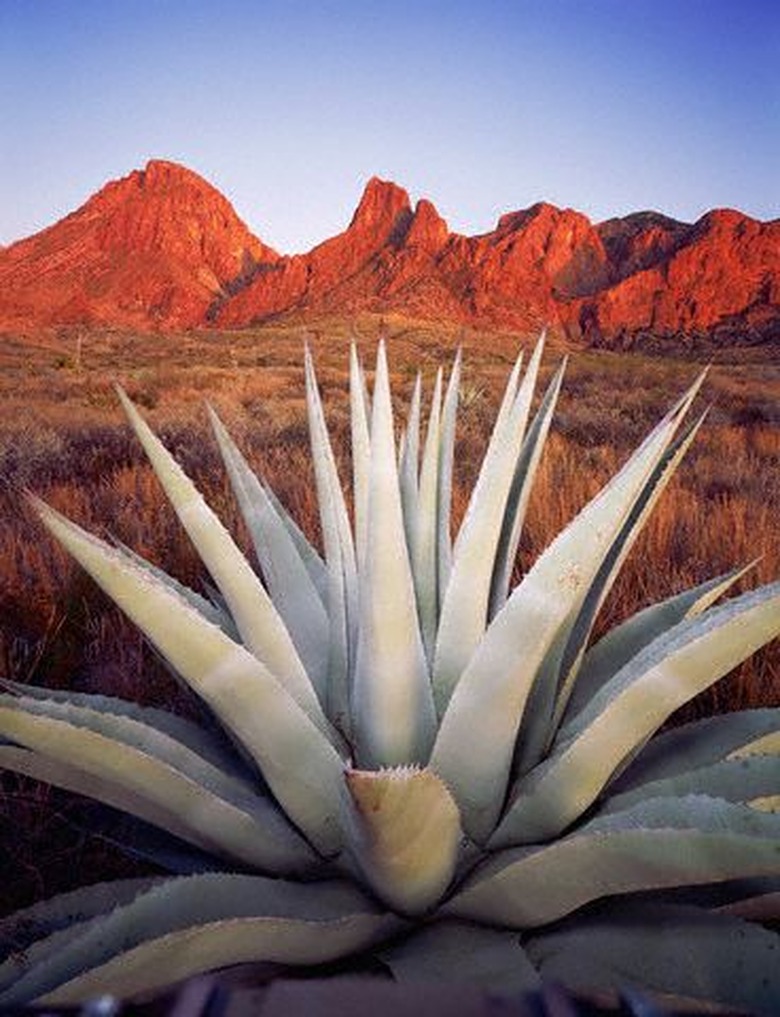Facts About Agave
Agave is a genus of more than 200 recognized species that occur from Canada to the arid Southwest United States down south through Mexico to Central America. Most species grow in the desert regions of the United States and Mexico. They are closely related to the Yucca plants.
Description
Agave plants are fleshy-leaved succulents. They form dense rosettes of leaves that have teeth running up the edges, ending in a sharp point on the end. The interior of the leaves are filled with a fibrous material that holds moisture. Agave leaves are usually green, whitish-green or blue-green. Mature plants produce pups that emerge around the base from the roots of the mother plant. These can be dug up and replanted.
- Agave is a genus of more than 200 recognized species that occur from Canada to the arid Southwest United States down south through Mexico to Central America.
- Agave plants are fleshy-leaved succulents.
Flowering
Most agaves only flower once in their life then die such as A. deserti, the century plant. Although it does not take a century to bloom, it may take up to eight to 20 years for the plant to flower. A few species of agave will flower several times.
The flowers of the agave are usually pollinated by bats, with a few species pollinated by insects. The flowers appear on spikes emerging from the center of the rosettes and usually grow to several feet high above the plant. The flower spike on an A. weberi at Boyce Thompson Arboretum, Arizona, was measured in May 2006 at 26 feet.
Adaptations
The thick leaves are the main adaptation of the agave. The interior of the leaves holds water to keep the plant alive in the hot desert climates it lives in. The thick coating on the leaves reduces water loss and protects the plant from sunburn in the full desert sun.
- Most agaves only flower once in their life then die such as A. deserti, the century plant.
- The thick coating on the leaves reduces water loss and protects the plant from sunburn in the full desert sun.
The sharp teeth present along the leaf margins and the sharp spike on the end of each leaf protect it from large predators.
Uses
Agaves are used in the American southwest as ornamental shrubs in traffic islands and along roadsides. They are perfect because they are relatively maintenance free and do not need to be watered. An often-seen species used for road planting is A. Americana because of its adaptability and tolerance of wet soil and cooler climates.
Some species of agave can be harvested and eaten for food. This was a traditional food source for some Native American tribes. The fibers in the leaves of a few species are used to make natural rope fibers.
- The sharp teeth present along the leaf margins and the sharp spike on the end of each leaf protect it from large predators.
- An often-seen species used for road planting is A. Americana because of its adaptability and tolerance of wet soil and cooler climates.
Weber's Blue Agave
Weber's blue agave (A. tequilana) is probably the most widely known and agriculturally important of all the agave plants. This is the plant from which tequila is made. There are no known wild populations of this plant; it only survives in cultivation.
Under the "National Treatment and Market Access for Goods, Distinctive Products" section of the NAFTA agreement, tequila can only be sold as tequila if it is produced from Weber's blue agave in Mexico in accordance with Mexican law. This is the same law governing the naming and location that is specific to the production of Canadian and Tennessee whiskeys.

